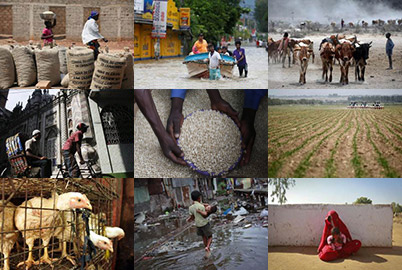Ecuador's heaviest rains in 25 years have plunged the country into crisis as floods uproot tens of thousands of people and destroy millions of dollars of crops, threatening food shortages.
The government has declared a national emergency and called for international aid. President Rafael Correa said on his latest weekly radio show: "This is not an emergency, this is a disaster. We don't have enough resources to help all the victims."
Blame it on La Nina, an unusual cooling of Pacific Ocean surface temperatures that can trigger widespread changes in weather around the world, including more hurricanes and worse torrential rains in places.
Flooding is not unusual during Ecuador's rainy season, which runs from December to the end of May. But this year's deluge has been unforgiving as the weather anomaly, meaning "little girl" in Spanish, swells rivers and bursts banks.
All the western coastal provinces have been affected. See this flood map posted by ReliefWeb for an instant view of the extent of the crisis.
Media reports put the death toll at 16, while the number of affected is around 300,000. Troops have been mobilised to help with evacuations and distribute aid.
The government says more than $161 million of crops have been lost as floods swamp hundreds of banana, rice and cocoa plantations in the west. Television stations have shown images of farmers in canoes looking at their devastated fields, and entire coastal villages of wood shacks submerged in waist-high water. See our gallery of Reuters pictures.
The implications for agriculture could be dire. The farm ministry estimates 30 percent of crops have been damaged and more than 102,000 hectares (252,000 acres) of land flooded. It has warned of possible food shortages as a result.
Meanwhile, the rains have raised fears of another harsh winter like the one in the late 1990s that resulted in hundreds of millions of dollars in lost crops and shrimp farms. Those losses triggered an economic meltdown that contributed to the collapse of Ecuador's banking system.
The forecast doesn't look good. Weather experts say they expect more rain to fall in western Ecuador right up until late March. And the U.S. government's Climate Prediction Center says La Nina has strengthened, threatening to unleash her havoc until well into June. This petulant little girl may not have done her worst.
Our Standards: The Thomson Reuters Trust Principles.

